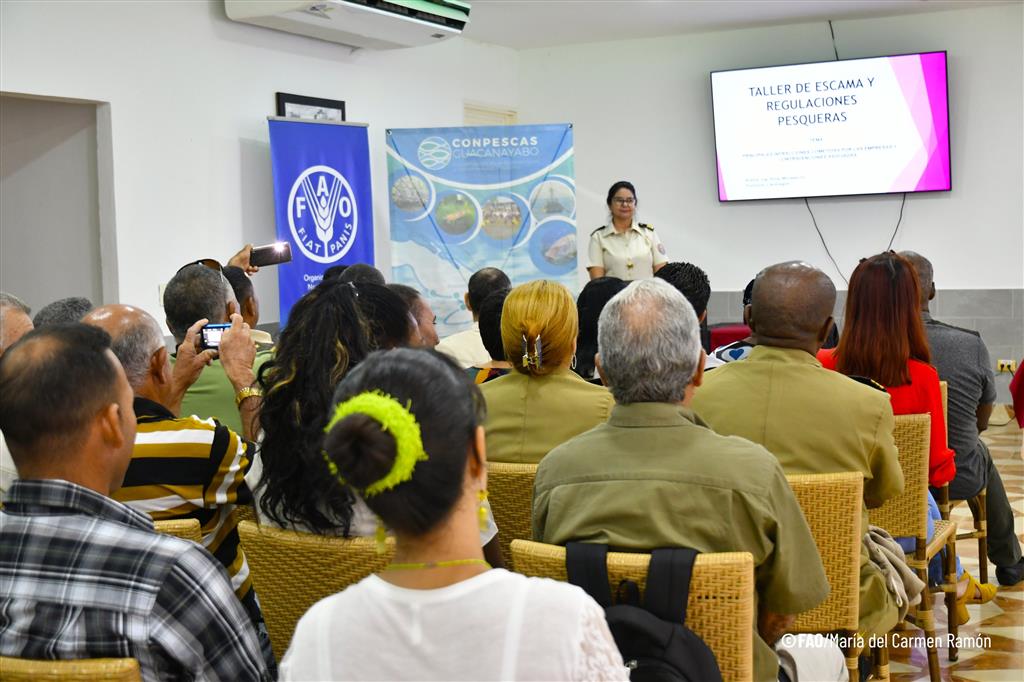 Havana, Nov 23.- The Food and Agriculture Organization of the United Nations (FAO), with financing from the Global Environment Facility, promotes the preservation of fishing resources in Cuba, a report indicates today.
Havana, Nov 23.- The Food and Agriculture Organization of the United Nations (FAO), with financing from the Global Environment Facility, promotes the preservation of fishing resources in Cuba, a report indicates today.
In that sense, the FAO office in Havana released a report during this day that explains elements in this regard.
It points out that contributing to the preservation and sustainable use of fishing resources in the southeastern shelf of Cuba, the implementation of control and surveillance systems and alternatives to reduce the impact of catches were purposes of the National Workshop on Scales and Fisheries Regulations.
Such a meeting occurred recently as part of the Conpescas Guacanayabo project, implemented by the Fisheries Research Center (CIP), with technical assistance from the FAO, the message emphasizes.
Inaugurated by the vice minister of the Ministry of the Food Industry (MINAL), Midalys Naranjo, the event included the participation of CIP researchers, fishing companies in the country and members of the inspectorate of the National State Inspection Office (ONIE).
During the meeting, proposals for regulatory measures for the multispecies marine fish fishery were discussed. They are based on scientific studies and bioeconomic models that show the state of catches and the vulnerability to fishing of species of commercial interest, including the biajaiba, the criollo snapper, the sierra, the serrucho, among others.
This will allow us to evaluate the current state of the species that inhabit that ecosystem, design future strategies for the sustainable management of this type of fishery and facilitate decision-making in the sector.
In this regard, the CIP researcher, Romina Alzugaray, pointed out that given the consequent decrease in fish catches in the Gulf of Guacanayabo during the last 10 years, it is necessary to review and update the established fisheries management measures.
As part of the conference, the prospects for the development of marine crops were also discussed as alternatives to reduce fishing pressure on natural resources, taking as a reference the National Maritime Farming Strategy, approved in 2019 by the MINAL, with technical assistance from the FAO.
In this sense, topics such as the perspectives of sea cucumber cultivation, the eco-friendly cultivation of mangrove oysters and the environmental benefits they provide in marine aquaculture systems were addressed.
With an amount of one million 319 thousand 863 dollars contributed by the Global Environment Fund, Conpescas Guacanayabo will contribute to the conservation of marine biodiversity through the management of fishing and other marine-coastal resources of the Gulf of Guacanayabo, using the ecosystem approach to fishing and aquaculture.
As project areas they indicated the coastal municipalities of Amancio Rodríguez, in the province of Las Tunas, Manzanillo in Granma and Santa Cruz del Sur in Camagüey.
The main problems are related to the loss of marine-coastal biological diversity and the decline of fisheries, as a result of unsustainable practices, environmental degradation and the impacts of climate change.
In terms of concepts, they recalled that multispecies fisheries are the type of fishing in which fish of different species are captured simultaneously using the same fishing gear or system. (Text and photo: PL)